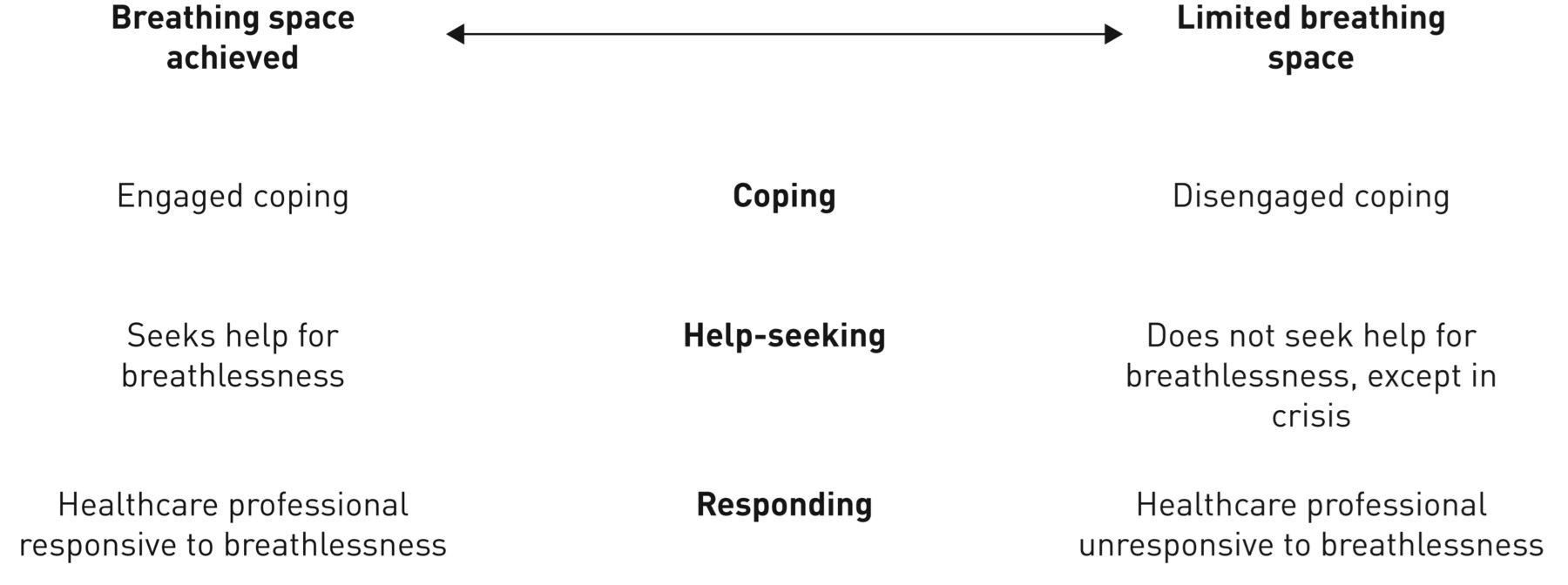For patients
- St Christopher’s Breathlessness Self-Management
- This is a series of videos based on the Breathing Thinking Functioning model [1] which aims to teach self-management strategies to patients – these are very easy to understand and can give you pointers on targeted breathlessness interventions!
- Asthma UK – Keep Active Programme
- The Keep Active programme gives you everything you need to start moving more with your lung condition. It includes:
- advice to help you move safely with your lung condition
- breathing techniques to help you when you’re active
- a gentle warm up
- step-by-step exercises to help you feel stronger and more energetic
- a cool down and stretch
- stories from people with lung conditions to inspire you to move more.
- Encourages safe ways to increase functional ability with lung disease
- The Keep Active programme gives you everything you need to start moving more with your lung condition. It includes:
- Macmillan
- Handbook
- The booklet explains the causes of breathlessness and the different ways to manage it. It has breathing and relaxation techniques. It also explains medicines to control breathlessness. We hope it helps you deal with breathlessness and answers some of the questions you may have. Carers, family members and friends might find this information helpful too.
- The Cheyne Gang
- The Cheyne Gang is a community singing group for people living with long term respiratory conditions such as COPD (Chronic Obstructive Pulmonary Disease), Asthma, Bronchiectasis – in fact any respiratory condition that causes long term breathlessness.
- Embed video: https://youtu.be/6HlKQx7jH5I
- Here is a link to a collection of breathing exercises and songs that you can participate in at home. These exercises and songs have all been selected with singing for lung health in mind. Perfect if you can’t make it along to your Cheyne Gang group, or if you live too far away to come along to one of our sessions.
- The British Heart Foundation
- Patient friendly guide to breathlessness caused by their heart condition and how they can better manage it for themselves
- Handbook
For Carers
- Supporting Breathlessness
- ‘Supporting Someone with Breathlessness’ is a source full of help and advice made for family and friends of people with breathlessness (sometimes called “carers”).
- Has different sections for supporting breathlessness related to Cancer, COPD, COVID-19, and other causes.
Further Research
- The Wolfson Palliative Care Research Centre has a variety of research projects themed around breathlessness ongoing.
- The BETTER-BREATHE consortium have been engaged in a large body of research around breathlessness throughout the UK as well as disseminating that research
- At Kings College London, The Cicely Saunders Institute of Palliative Care, Policy & Rehabilitation has an ongoing programme of research into breathlessness management in advanced disease.
Learn More
- Breathing Thinking Functioning
- Site hosted by Cambridge Breathlessness Intervention Service with resources and information about their model and how to learn to deliver BSS using their techniques
- Hull York Medical School – Bringing Breathlessness Into View
- People living with breathlessness find their experience hard to describe to others; researchers created an exhibition to show the public what it is like living with breathlessness.
- This multi-media mobile exhibition was co-created by local people living with breathlessness, photographic and sound artists and health researchers. The exhibition has striking images and engaging sound recordings to help people understand what it is like to have breathlessness.
- They also have created the concept of Breathing Space to show how engaged coping and appropriate help-seeking (patient) and attention to symptom (clinician) helps maximise the patient’s quality of living with breathlessness.

- Durham University – Catch Your Breath Exhibition
- Everyone breathes. From a baby’s first cries to a dying gasp, breath is an ever-present companion on the journey through life. Breathing isn’t just a biological process. It enables us to communicate, to speak, to create music. It can have deep cultural and spiritual meaning. It can be a marker of both health and illness.
- In 2018 the authors created an exhibition called Catch Your Breath to help us tell the story of the Life of Breath project and to explore how our relationship with and understanding of the breath has developed over time, from ancient philosophers who equated breath with life itself to the latest advances in medicine. This was launched at Palace Green Library, Durham in 2018 and converted into an online online version during 2020.
- Kate Binnie is a music therapist, yoga and mindfulness teacher with an Msc in Palliative Care and a special interest in the relationship between breath and emotion regulation, and how this can be used clinically in the management of refractory breathlessness across advanced disease.
- “Working as a therapist with people towards the end of their lives, and with a particular interest in the power of breath regulation as a tool for emotion regulation and symptom control, I started making this ‘breath-voice collage’ by recording an ‘anchor’ breath, which would act as a metronome throughout the piece. This was the sound of a heartbeat timed to a ‘coherent’ breath. This breath, commonly used by meditators and yoga practitioners, is timed at five breaths per minute, and has been shown to help people recover from trauma and anxiety disorders, and to relieve physical and psychological pain (see Brown & Gerberg 2012) and I often use this in therapy.I then interwove recordings I had saved on my iphone over the years…. my children as babies, their sleeping breaths, an old recording of my partner and I singing our child to sleep. I also recorded the breathing of a patient with chronic obstructive pulmonary disease (COPD) and his words, describing how he felt about his loss of breath. Lastly, I used a recording of my father’s breathing during his last days in the hospice. During that time, the sound of his breath was extremely important, precious and fragile because we knew it would end. In the liminal phase between life and death I sang to him the songs he loved. The Skye Boat Song was one of his favourites….”
Kate Binnie Audio - First and last breath Soundscape

